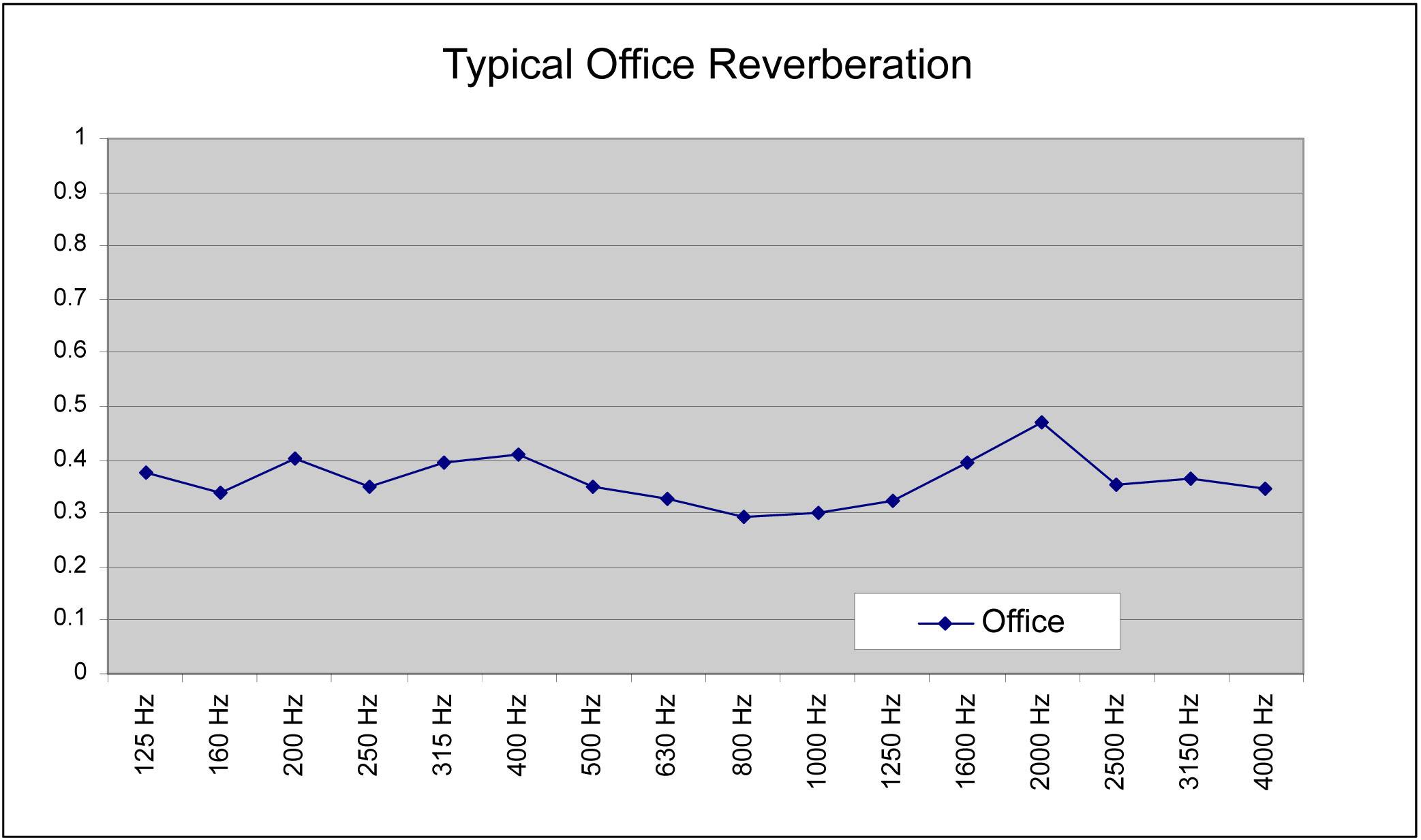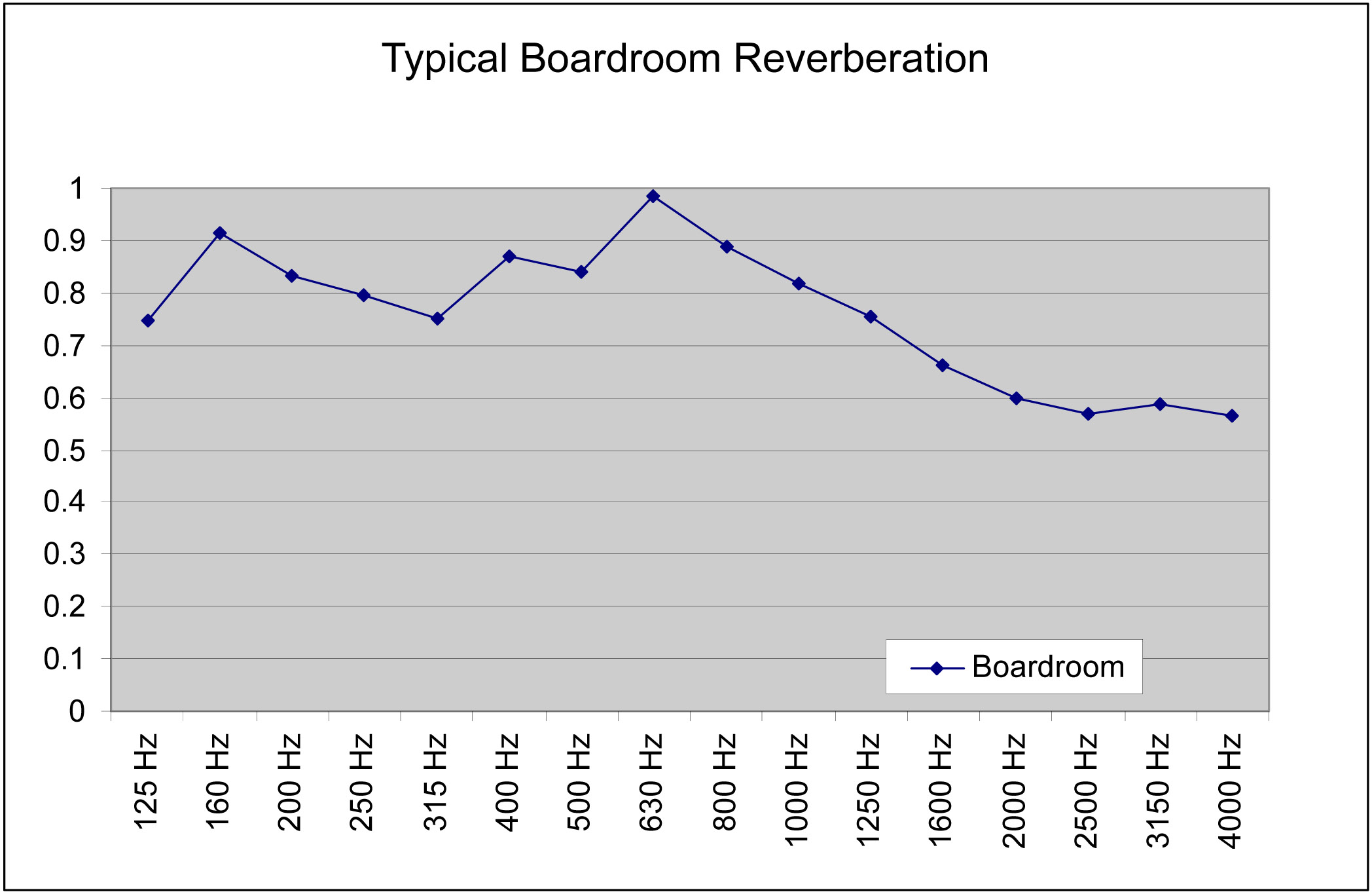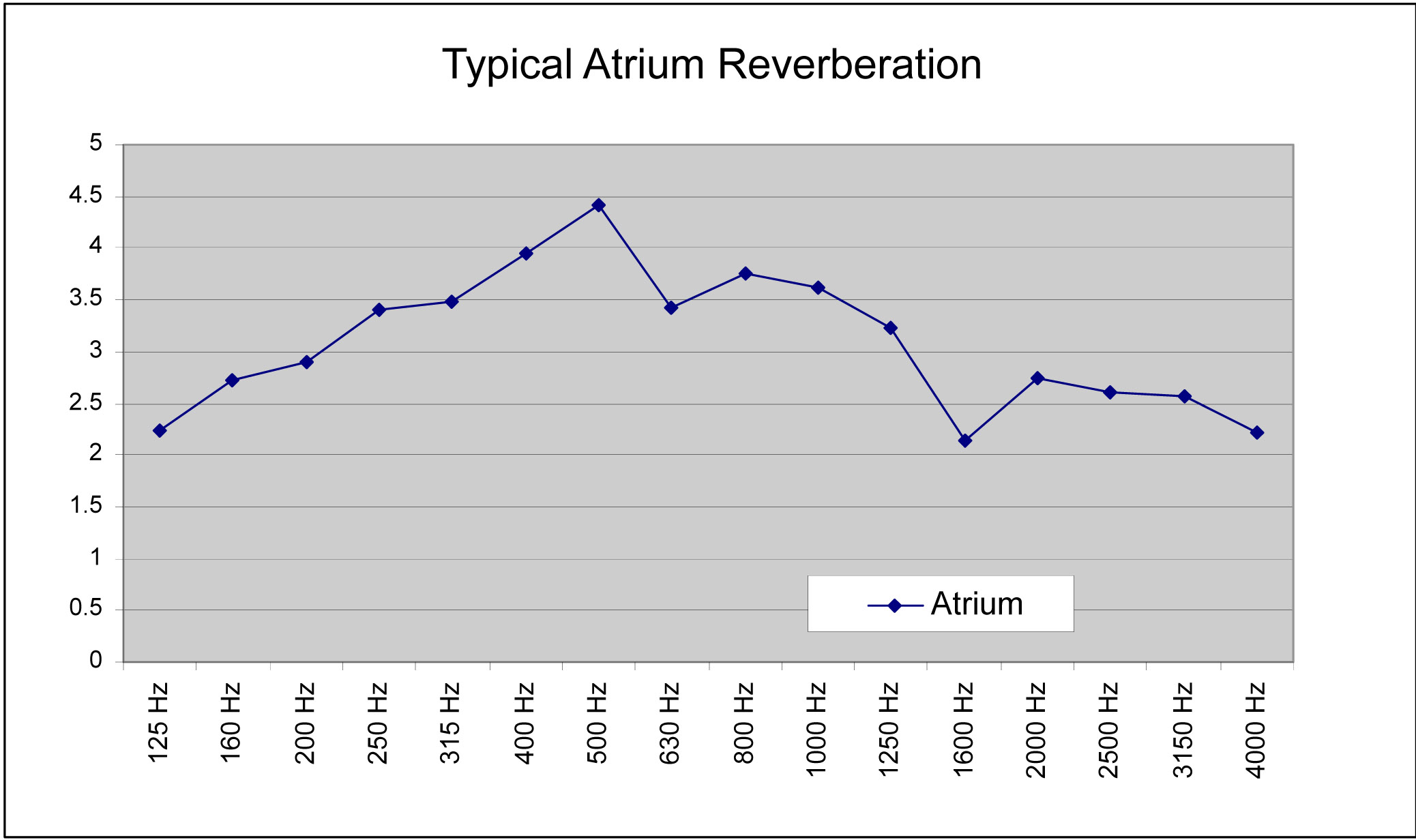
Reverberation Time (RT60) is the time required for sound to decay through 60 dB or to inaudibility, once the sound has stopped. The value for RT60 is expressed in seconds over the various octave or
1/3 octave bands of the sound spectrum, as each frequency decays at a different rate. The effects of reverberation are independent of any sound system installed and are only dependent on the room volume, surface areas and sound absorption properties of the surface areas. It is long reverberation that produces the effect of loud enough, but often unintelligible speech. Reverberation control is fundamental to good acoustic design, and the intended use of each space determines the appropriate design goal. Whether the space is a recording studio, church, atrium or office building, proper reverberation time is a very important consideration.

A long reverberation is commonly experienced in large volume spaces such as airports, gymnasia, arenas
or atriums. When it comes to speech, each person speaking will produce about 10 speech sounds per
second. This number is multiplied by the reverberation time and the number of people speaking or making
noise at any one time, to arrive at the number of sounds audible in the sound field.
When too many sounds are audible at one time, our brains have difficulty in discriminating the subtle
consonant sounds that create intelligible speech, due to overlap.
Reducing reverberance improves our ability to distinguish individual speech sounds and direction. Those with hearing impairment or with hearing aids are particularly disrupted by the effect of reverberance. In addition, the reverberation time determines the distribution of sound in a space. The higher the reverberance, the slower the sound will dissipate
and the more equal the distribution will be. By adding more sound absorption, we reduce reverberance, improve intelligibility and reduce the sound level. Reverberation time is even more critical in rooms with high background noise due to the HVAC or mechanical noise. Reverberation is one of the primary determinants of speech intelligibility; a long reverberation time paired with high background noise will drastically reduce speech intelligibility. In a studio or critical listening space, the reverberation time in each octave or 3rd octave band must be a natural curve from low to high frequencies.
If the reverberation is too long at low frequencies compared to high frequencies, the space will sound
unnatural and ‘boomy’. If the reverberation is too short at high frequencies, the space will sound very dry.
The following chart displays an example of typical office reverberation test results with ceiling tile and carpet. The horizontal axis displays each tested frequency band organized into third octave bands between 125 Hz and 4000 Hz. The vertical axis displays the time it takes for the sound to decay through 60 dB.

The RT60 chart shows a relatively uniform value of 0.3 to 0.4 seconds at all frequencies. With a low
background noise level this office would be very conducive to understanding speech and media. To get
test results similar to above, the office would have sound absorptive material such as carpet and acoustic
ceiling tiles. If the ceiling tile is removed, the RT60 value goes up making all sounds louder and speech
more difficult to understand.
Our ear responds much better to higher frequency sound than to low frequency. A completely flat
frequency reverberation time would be perceived as a room lacking bass frequencies when used for
musical instruments. Therefore to perceive a flat frequency response we need a smooth curve from the
low frequencies to the high frequencies.
The perception of a flat frequency response in the RT60 of a room is not as important in terms of speech
intelligibility than it is for rooms with other functions such as a recording studio or critical listening area. In
typical office or boardrooms the speech frequencies are the most important, i.e. between 500 and 4000
Hz.
A typical boardroom will have a longer RT60 time then a typical office because they are a generally larger
space. The RT60 results displayed on the chart below represent a boardroom with carpeting and
acoustic wall panels, with a volume of around 350 m3.

Here the RT60 value is in the range of 0.7 to 1.0 seconds, or more than double the values from the office
example. In this case, speech would be difficult to understand and the space needs further acoustic
design to make it acceptable. The reverberation time in any space depends on the surface materials and
the volume. In a room with total sound absorption, which is known as an anechoic chamber, there are no
sound reflections therefore no reverberation time. In large churches with a large volume and reflective
surface materials the reverberation time can range as high as 8 to 9 seconds.
The following chart displays the reverberation test results for a typical atrium space. It has a very large
volume and the surface materials are primarily glass.

This is a very high reverberation time of up to 4.5 seconds makes for very low speech intelligibility and a generally acoustically uncomfortable space. It would be challenging to install a loudspeaker system and be able to understand any speech. A very large amount of acoustical materials would be required to bring the RT60 values into the range needed for acceptable speech intelligibility.